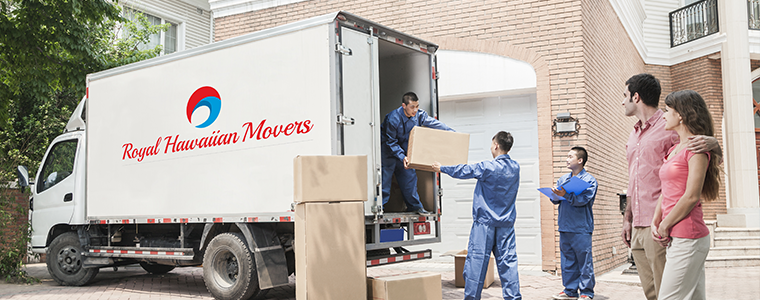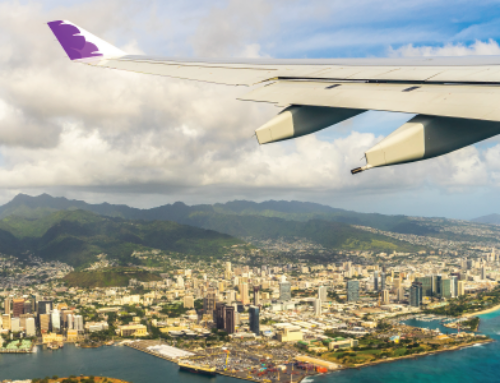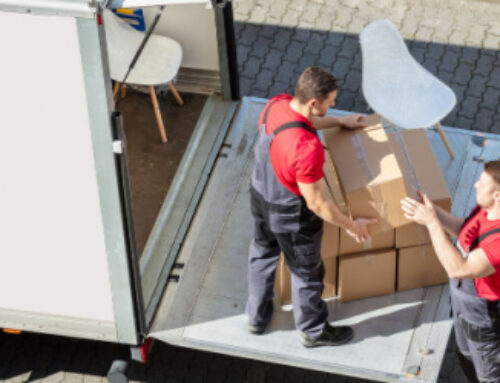Have you ever found yourself sitting at the airport at the end of your vacation with a pit in your stomach? Maybe you even searched your brain for rational reasons to skip your flight home? Or tried desperately to figure out a way to stay? If so, you’ve experienced the same feelings many people have after a trip to Hawaii.
However, while some only dream of making the move to paradise, others make it happen. In 2019, 49,708 U.S. residents relocated to the Aloha State. If you want to join them, we’ve put together this Insider’s Guide to moving to Hawaii. Whether you want to establish your home on Oahu, Maui, the Big Island, or Kauai, we’ll offer you the tips and tricks you need to make a smooth transition to Hawaii, the land of rainbows.
Let’s start with the first big decision you’ll need to make: what island you plan to call “home.”
Which Hawaiian Island Is Right for You?
Hawaii is an archipelago—a chain of islands. Within the state, you’ll find seven inhabited islands: four well-populated islands, two lesser-populated ones, and one “forbidden island” that’s open only to those who are invited.
Each of the Hawaiian Islands has its own particular character, so you’ll want to choose carefully. You’ll find a detailed description of each one in our article, What’s the Best Hawaiian Island to Live on, and Why?
To give you a brief overview of the big four:
- Oahu, the Gathering Place, is home to nearly 975,000 of Hawaii’s 1.46 million residents.i It’s also home to the state’s capital, the bustling “city” of Honolulu.
- Hawaii, also known as the Big Island or the Orchid Isle, is the largest and newest of the Hawaiian islands. It’s also where you’ll find the island chain’s only active volcano, Kilauea. Agriculture is a major part of the Big Island’s economy, so you’ll see a lot of wide-open farm land as you drive around.
- Kauai, the Garden Isle, is the smallest of these four both in size and population, and its character is dominated by local charm. If you’re looking to slow down and get away from it all, Kauai is a good bet.
- Maui, the Valley Isle, is often described as more developed than Kauai and the Big Island, but much less hectic than Oahu. While it has several busy hubs of activity, Maui also boasts plenty of wilder areas where you can enjoy the gorgeous natural landscape.
If you’re curious about Hawaii’s three other populated islands, read more about on Lanai, Molokai, and Niihau. As you weigh the merits of each of the islands, you might also wonder what kind of home you’ll be living in—and how much it will cost you.
What Are the Average Rents in Hawaii?
Although Hawaii’s remote location has given it an extraordinary variety of plant and animal species, it also means a high cost of living for its residents. Since almost everything has to be imported, Hawaii regularly tops the list of most expensive states to live in. In other words, there are costs to living in paradise. However, for residents who appreciate the unique perks of this Pacific paradise, it’s more than worth it.
Rents can be pricey in Hawaii—with a few caveats. If you’re moving from an expensive city, like San Francisco, Los Angeles, or New York, you may find that your rent in Hawaii turns out to be cheaper. Additionally, you’ll find that average rents vary between islands. They also depend heavily on both location and what kind of amenities you’ll enjoy. A condo with a community pool in a bustling area may end up costing you more than a studio in a rural area. To give you a broad sense of what a one-bedroom might cost you on each island:
Average Costs for a 1BR
(Costs vary, depending on location and amenities)
- Oahu: $1,300–$1,800+
- Big Island: Hilo – $900-1,200+
- Big Island: Kona – $1,200–$1,500+
- Kauai: $1,200–$1,800+
- Maui: $1,200–$1,500+
Local Tip: Many of the rentals you’ll find are what are called ohanas—small, usually detached cottages that sit on the same property as a larger house. As the name implies (ohana means “family”), some people use these buildings to house family members. Others use them as rentals. The great part about renting an ohana is that they’re generally detached, as opposed to some rentals which are part of a larger home. However, you may find yourself just a stone’s throw from your landlord, which also has its ups and downs. Some ohanas are also not equipped with full stoves and, instead, have a hot plate for your use. Keep all of this in mind as you look for the right living situation. (It’s out there! It might just take some patience.)
How do people find apartments in Hawaii? A lot gets done via coconut telegraph, that person-to-person network that operates so efficiently in Hawaii. For new residents, though, Facebook and Craigslist can offer you a great start:
- Facebook Oahu:
Oahu Homes For Rent and Sale
Honolulu Rentals, Apartments, Housing, Rooms, Sublets, Roommates
- Facebook Big Island:
BIG ISLAND by Owner – Property to Sell or Rent
Kailua Kona Long Term Rentals
- Craigslist: Choose your island from the top to find island-specific listings.
Additionally, Zillow is starting to get a little more traction in Hawaii. Many of these places are listed through real estate agents, which offers an extra layer of legitimacy. One final note: It’s much easier to find a place to rent once you’re actually on island. Landlords are often reluctant to rent to people they haven’t met. Additionally, meeting your potential landlord and touring the property can help protect you from the occasional housing scam. (Rule of thumb: If it sounds too good to be true, it probably is!) You may consider getting a temporary place through AirBnB or VRBO while you look for a permanent home.
Once you’ve established a home base, your next step will be to grab the essentials—and enjoy all the fun, local shops that give Hawaii its charm and character.
Where Should I Shop in Hawaii?
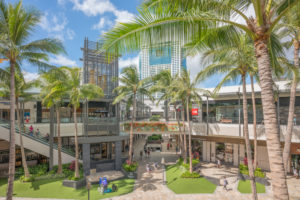
photo credit: Theodore Trimmer / Shutterstock.com
You’ll find many familiar chains and brands in Hawaii, including Safeway, the Home Depot, Lowe’s, Costco, Wal-Mart, Target, Starbucks, McDonald’s, Wendy’s, Taco Bell, and many, many more. While these recognizable names can offer an air of comfort, the real fun of living in Hawaii comes from discovering the unique local businesses you’ll find only in Hawaii.
A few of our favorites:
On Oahu:
- Ono Pops, handmade organic local treats, available at the KCC Farmers Market.
- Uyeda Shoes, a family-owned multi-generational business that’s been around for 100+ years.
- Kealopiko, gorgeous fabrics and clothing made in Hawaii, many on Molokai.
On the Big Island:
- Hana Hou, a boutique that’s also a cultural gathering place in downtown Hilo.
- Nani Kai Cottage featuring handmade-in-Hawaii Kai Ea Jewelry
- Kona Stories, a local bookstore specializing in Hawaiiana, children’s books, and whimsical gifts
On Maui:
- Akamai Coffee, which offers several delicious varieties of all-Maui-grown coffee.
- Haku Maui, which sells traditional lei for all kinds of celebrations, plus workshops if you want to learn how to make your own
- Mele Ukulele, for when you’re ready to pick up a new hobby!
On Kauai:
- Talk Story bookstore, a Kauai institution that’s as an integral part of the local community.
- Monkeypod Jam, which incorporates produce from more than 25 Kauai farmers to create their 55 seasonal preserves.
- First Saturdays in Kapaa Town is a great opportunity to find a wide variety of local crafts, arts and artisans in one spot.
Now that you’ve figured out how to spend your money in Hawaii, you might also want to think about how you’re going to make it. Next, we’ll talk about job opportunities in Hawaii.
Where Can I Work in Hawaii?
If you’re not moving to the Aloha State with a job or as a member of the military, you might be wondering what kind of jobs you can find in Hawaii. As you might expect, Hawaii’s biggest industry far and away is tourism. If you’re interested in the idea of taking a job in hospitality, retail, service, transportation, food and beverage, or any of the other industries that cater to Hawaii’s many visitors, you’ll find it much easier to secure employment.
If you’re curious what other kinds of jobs are available, the other principal industries in the state include:
- Defense – The U.S. military is the second-largest economic sector in the state. Hawaii is also one of the few states to host the Air Force, Army, National Guard, Marines, and Coast Guard. If PCS orders bring you to Hawaii, you’ll be in good company.
- Agriculture and fishing – While estimates suggest Hawaii imports 85-90% of its food, you’ll still find opportunities in agriculture and fishing.
- Other popular industries include construction, education, health and social services and both state and county government.
Before you throw yourself too deeply into your work, it’s important to remember why you moved to Hawaii in the first place. In other words, what are some of the best things to do in Hawaii for fun?
How Can I Spend My Days off in Hawaii?
If you’re someone who loves the outdoors, you’ll find plenty to keep you occupied in Hawaii. To give you some inspiration, we’ve put together a few ideas to get you started:
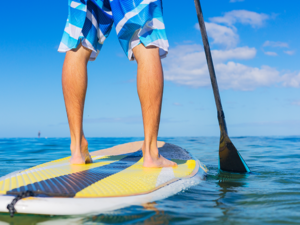
- Hit the beach and enjoy the water – Hawaii is a watersports paradise. You can do just about anything in, around, above, and below the water in Hawaii. This includes stand-up paddleboarding, surfing, snorkeling, windsurfing, kitesurfing, canoe paddling, scuba diving, fishing, freediving, whale watching during the winter months, and much more. Or, if you’re simply a beach bum at heart, the white, green, red, and black sands of Hawaii’s beaches await. (Snag a comfy Tommy Bahama beach chair at Costco!)
- Take a hike – You’ll find all kinds of opportunities to put miles on your feet throughout the islands. As you stroll, you’ll also get to enjoy the majesty of the Hawaiian landscape—and its variety. Trails will take you through dormant volcano craters, across old sugarcane fields, around redwood and pine forests, and through lush tropical rainforests. Some even offer a waterfall as a reward for all your hard work.
- Fill your plate – Hawaii’s broad mix of cultural influences have created a culinary scene you won’t find anywhere else. Grab a traditional plate lunch with Hawaiian kalua pig, dig into a hearty bowl of saimin noodle soup, munch a spam musubi (the perfect on-the-go-snack!), bite into a sugary malasada pastry. There are all kinds of new tastes for you to explore.
- Get married – The state of Hawaii hosted 20,057 weddings in 2019 alone.vi If you’ve been thinking about tying the knot, what better place than Hawaii!?
- Explore Hawaiian culture and history – Hawaii has become the special place it is today thanks to the influence of the island’s original inhabitants, who arrived from Polynesia. During your time in Hawaii, take the time to appreciate and enjoy the traditions of these original settlers. Catch a hula performance at the famed Merrie Monarch Festival. Explore Oahu’s Bishop Museum. Stop into a traditional slack-key performance. It will only make your time on the island that much more memorable.
Make Hawaii Your New Home
Are you ready to take the plunge? If so, you’ve now got a bunch of great tips to get you started on making your move to Hawaii. If you’d like to dive deeper into your island of choice, check out our island-specific insider’s guides:
Oahu:
The Big Island:
- Living in Hilo: An Insider’s Guide to Living on the Tropical Eastern Side of The Big Island
- Living in Kona: An Insider’s Guide to Living on the Leeward Side of The Big Island
Kauai:
Maui:
Finally, if you need some help moving to Hawaii, we’d be thrilled to assist! We’ve helped tens of thousands of families make a safe, easy, and affordable move. Additionally, we have crews and warehouses on all four major islands, so we’ll be with you every step of the way. To get started, request a complimentary quote from one of our experts.
